How to Temper Eggs (A Quick Guide)
The simple trick for velvety, lump-free custards.
This post may contain affiliate links. Read our privacy policy.
Tempering eggs is a fundamental technique in pastry making. If you’re thickening a liquid on the stove with eggs and want to avoid curdling, tempering is usually the way to go.
What is Tempering and Why We Do It
Tempering eggs means gradually warming and diluting the egg proteins to prevent curdling when added to a hot liquid. It also speeds up cooking without the need for constant whisking.
In short, tempering serves three purposes:
- Adds volume. Mixing in more liquid gives the egg proteins more room to disperse, reducing the chance of curdling. Plus, more liquid means slower, more controlled cooking.
- Warms eggs gently. Pouring whisked eggs straight into a hot pan will almost always scramble them. Mixing eggs with other liquids first helps, but if we don’t want any curdles, we must warm the eggs gently.
- Speeds up cooking. Without tempering, you’d have to whisk constantly and use lower heat to avoid curdling. Tempering allows you to heat the liquid almost to boiling, freeing you up to prep other ingredients.
That said, tempering doesn’t make eggs immune to curdling. If you overheat or overcook the mixture once the eggs are added, they’ll curdle the usual way.
Now that you know the what and why, let’s get into the how.
Tempering Eggs Technique
Here are the steps to temper eggs:
- Whisk the eggs. Whisk together the eggs (or yolks, or both) in a heatproof bowl.
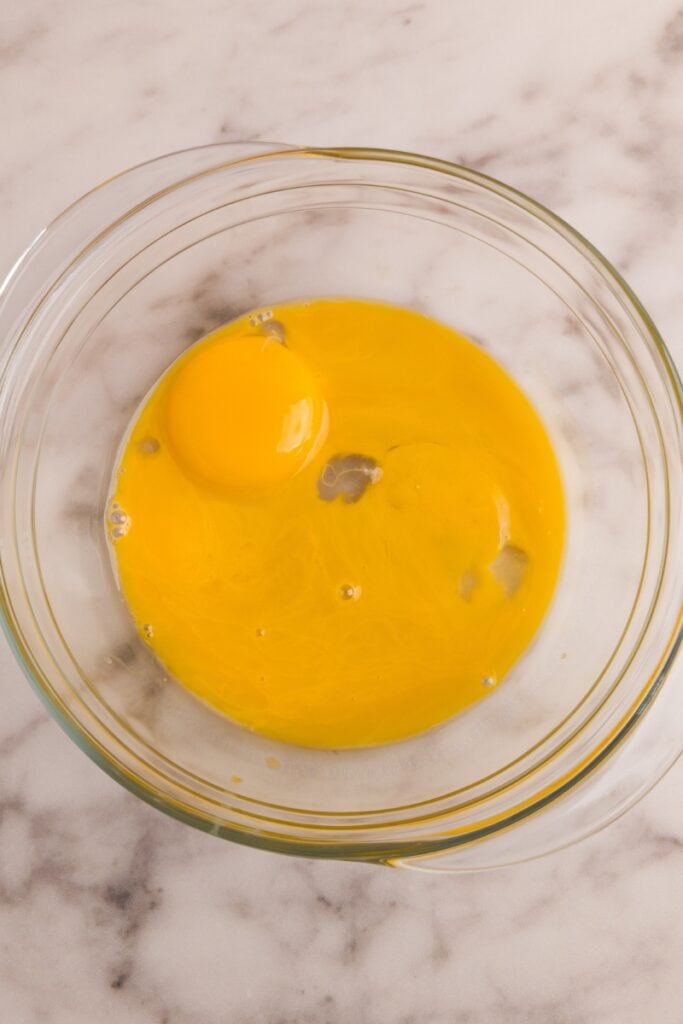
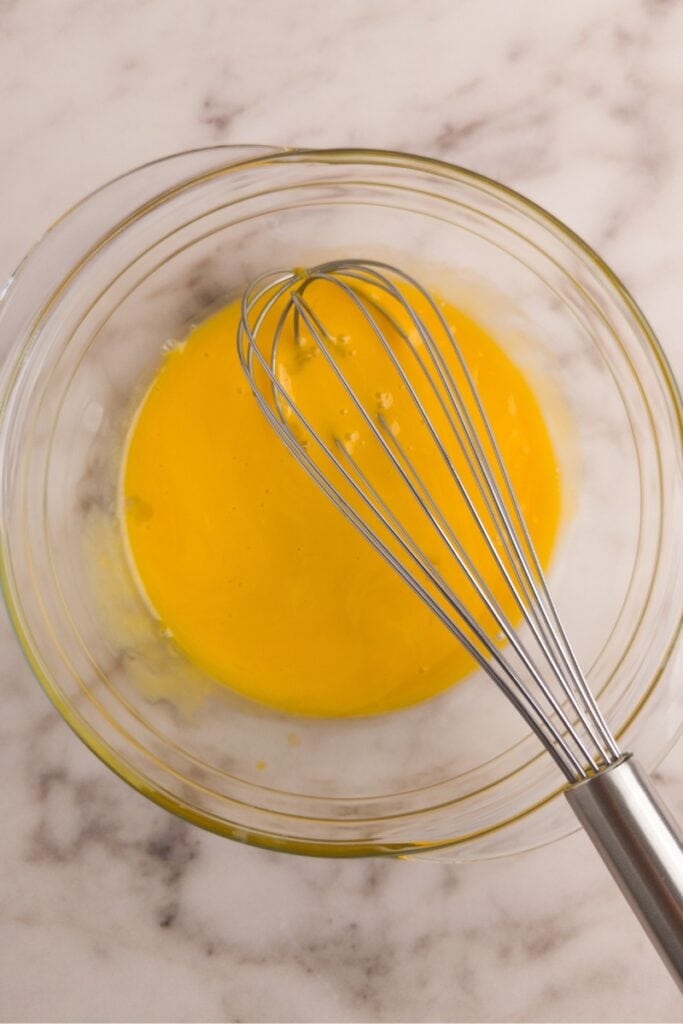
- Stir in extras. If the recipe calls for sugar or cornstarch, mix it into the eggs now. Adding a bit of cold or lukewarm liquid helps, too. For example, when making pastry cream, I add a few tablespoons of milk (from the measured amount) to the eggs and whisk them together.
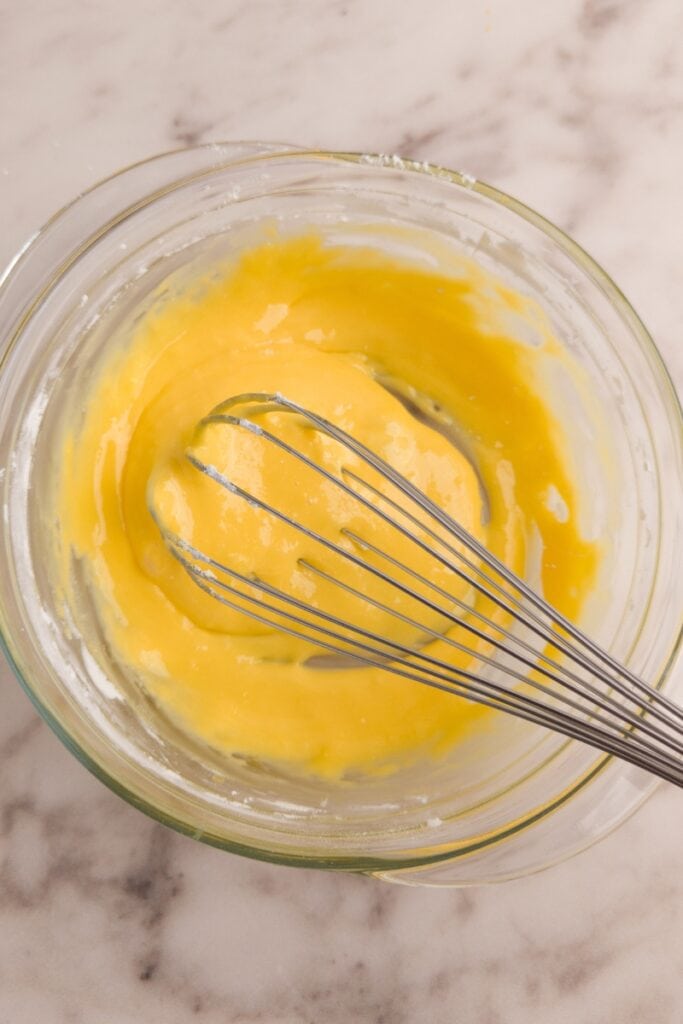
- Stream in the hot liquid. Once the liquid base is bubbling, remove it from the heat. Slowly pour the hot liquid into the eggs while whisking constantly. Start with a small amount—just a couple of tablespoons—whisk thoroughly, then gradually add larger amounts until the egg mixture is warm or hot. Keep whisking at all times.


- Return to the pot. Pour the warmed egg mixture back into the hot liquid, whisking constantly as you pour.

- Thicken the mixture. Cook over low to medium heat, whisking continuously, until the mixture thickens. Scrape the sides and bottom of the pot to prevent curdling in hot spots. The final thickness depends on the recipe: custards should coat the back of a spoon, while recipes with additional thickeners like cornstarch will need to be much thicker. Remove from heat as soon as it thickens.
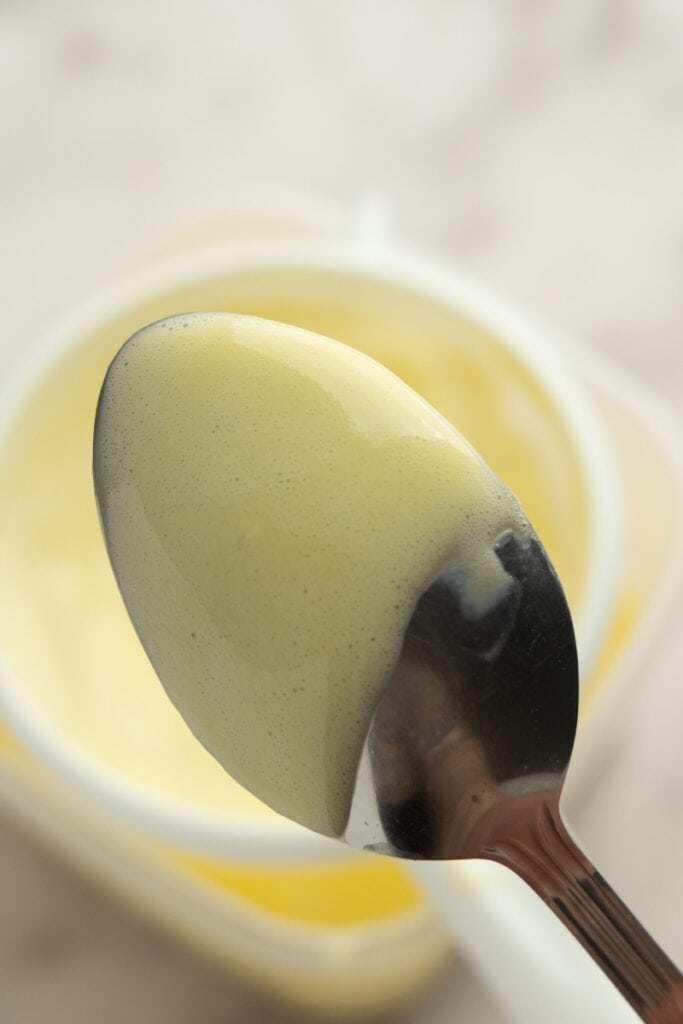
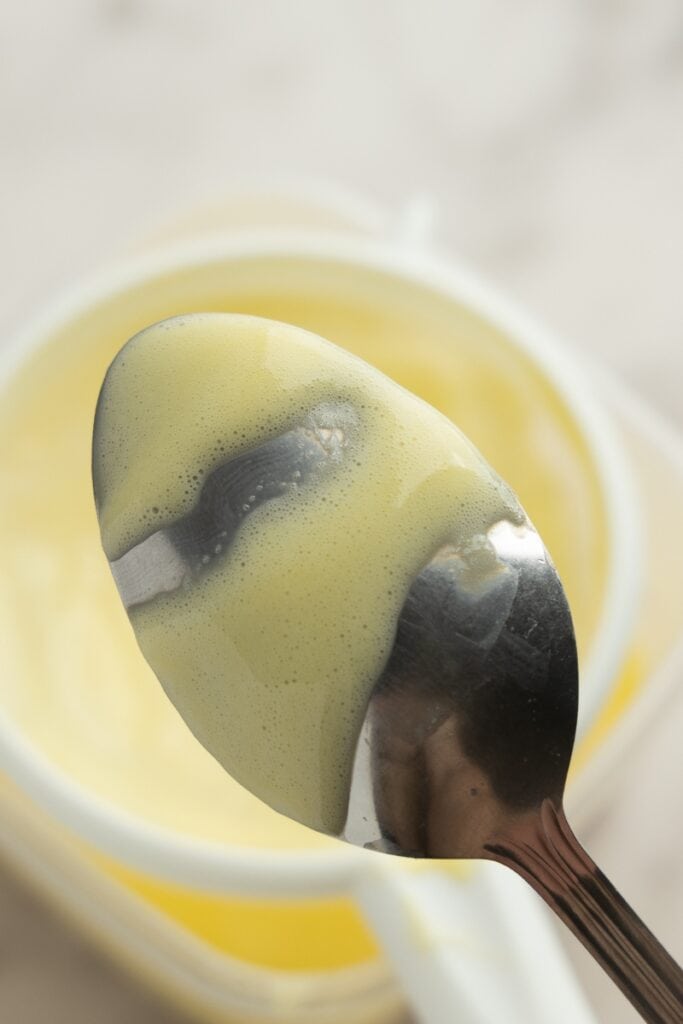

- Strain if needed. If you spot any curdles or want a perfectly smooth result, strain the mixture through a fine sieve. Alternatively, avoid scraping the bottom and sides of the pot, where curdles tend to form.

Tips
- Use a food thermometer. Egg proteins coagulate between 144°F and 158°F (62.2°C to 70°C). Once your mixture reaches this range, the eggs are cooked, and you can take it off the heat—unless you’re working with an additional thickening agent like cornstarch, which needs to be heated to around 176°F (80°C).
- Mind the texture. If the mixture starts to curdle even though you’re whisking and the heat is low, it’s likely too hot already. Remove it from the heat immediately.
When to Skip Tempering?
Tempering isn’t always necessary if your recipe uses a large amount of liquid compared to the eggs. You can mix everything in one pot and cook it together.
For example, in my pastry cream recipes, I use 4 egg yolks per 2 cups of milk. That’s enough liquid to safely skip tempering.
Pros? One less bowl to wash.
Cons? You’ll need to whisk constantly to prevent curdling, and you can’t use high heat without risking a scramble.
My recommendation? Temper eggs whenever possible. It adds an extra dish to wash but saves time and minimizes curdles.
What Recipes Use Tempering?
Tempering eggs is common in recipes like:
- Custards. Crème anglaise and crème bavaroise are classic examples.
- Pastry creams. Tempering is always part of the process in the 10+ pastry cream recipes I’ve shared.
- Fruit curds. Egg yolks thicken curds, and tempering speeds up the process compared to endless whisking over a double boiler. For small batches, a double boiler might still be the way to go, but tempering is ideal for larger quantities.

